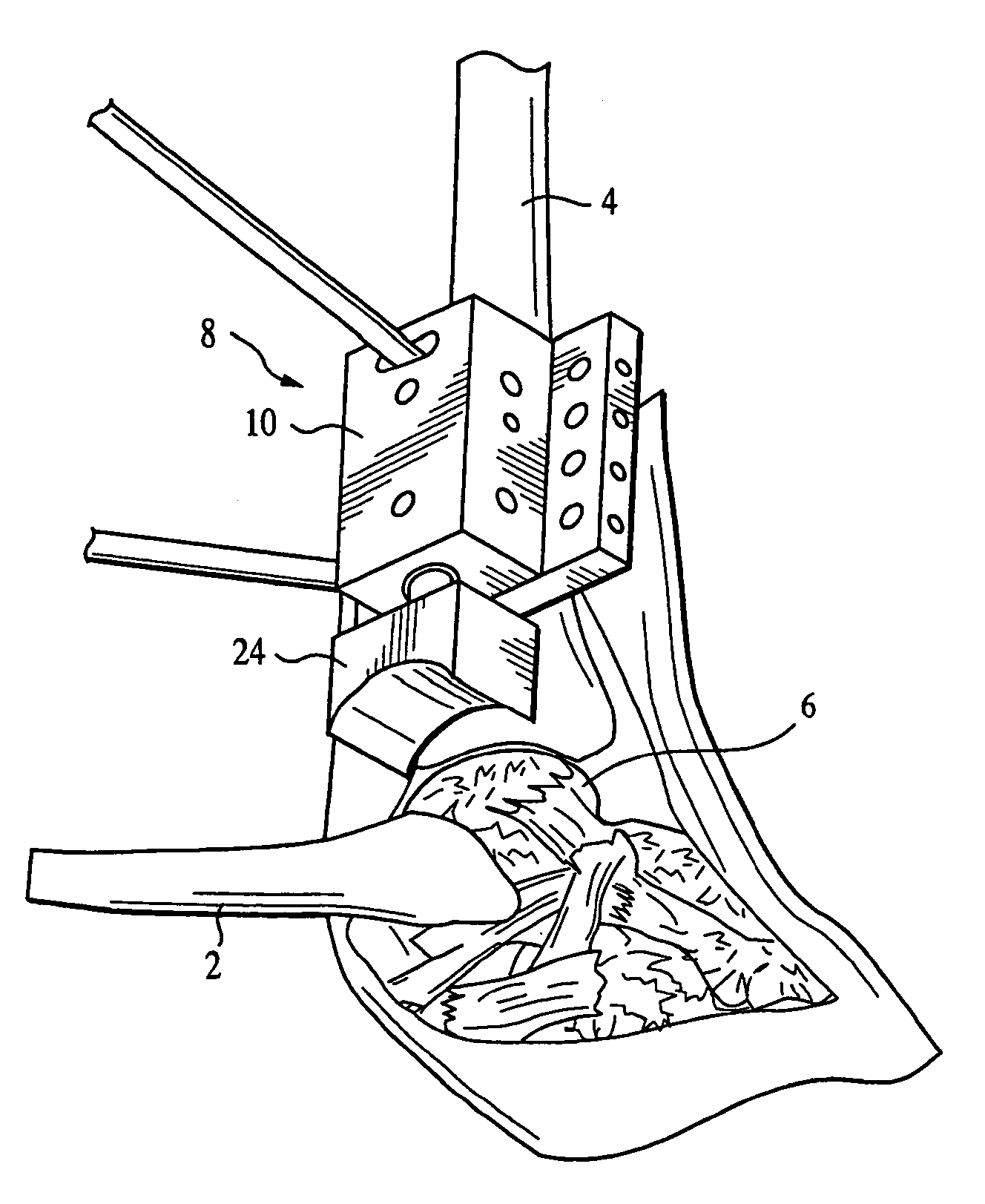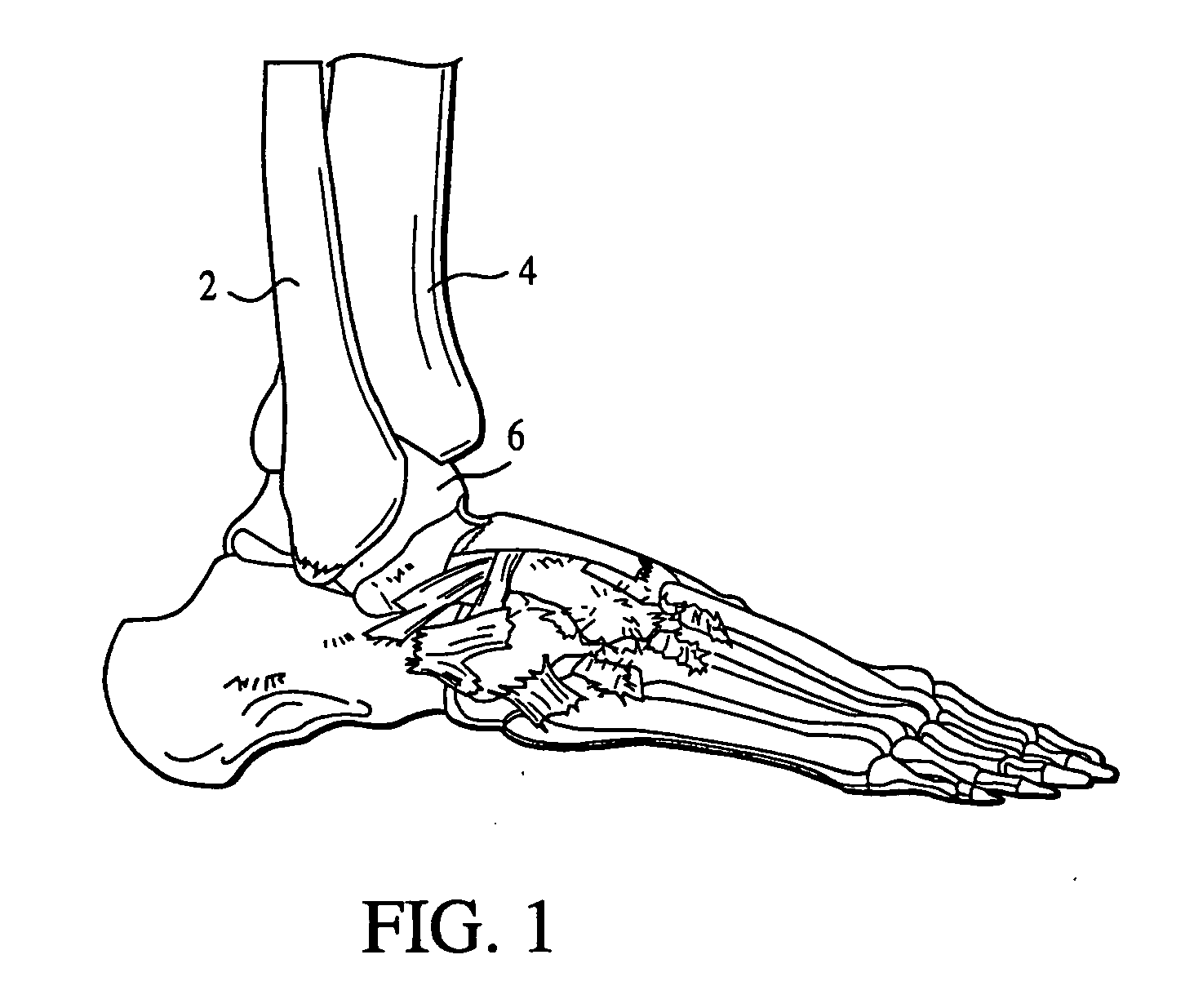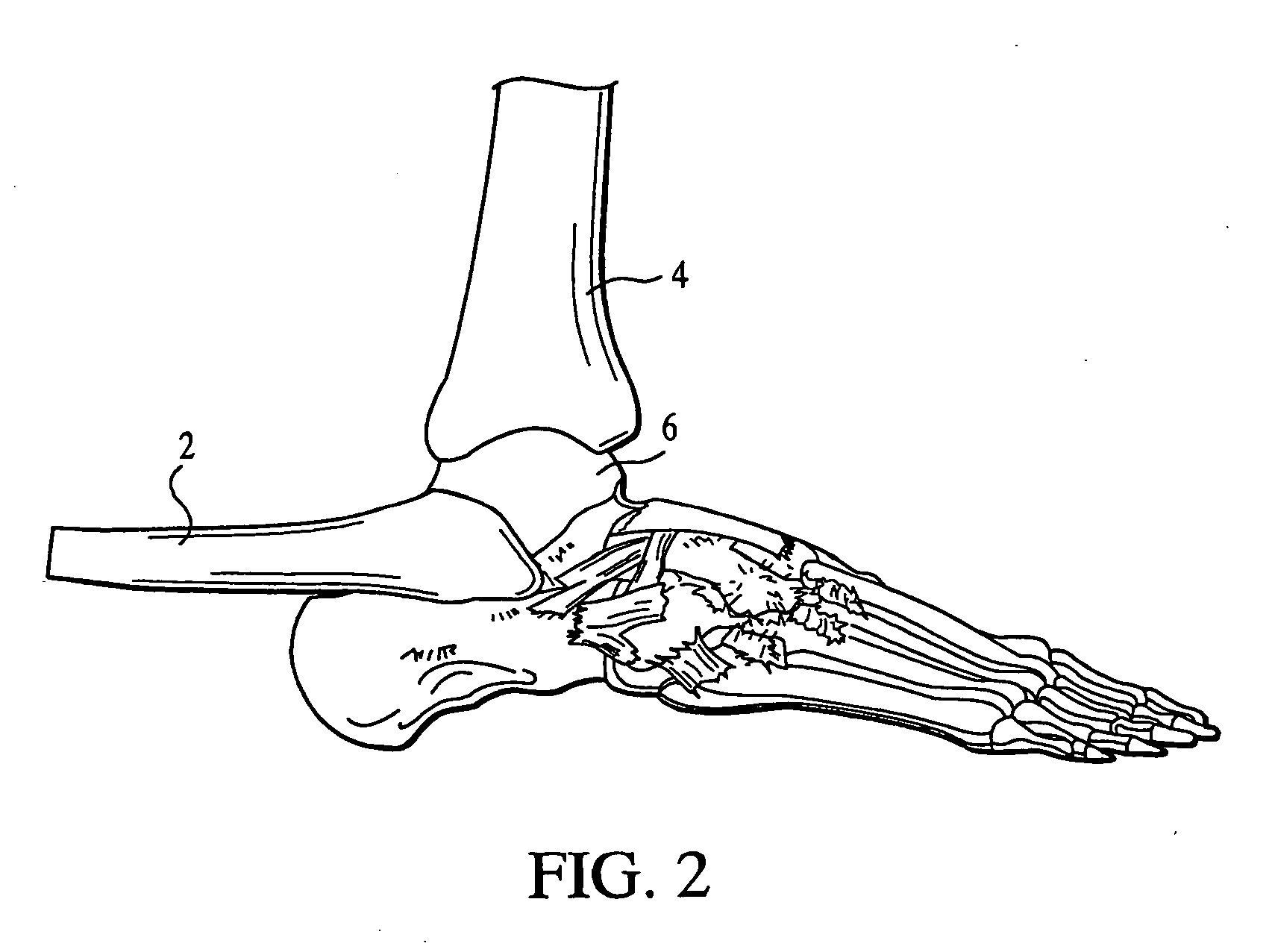Semi-constrained ankle joint prosthesis and its method of implantation
a prosthesis and ankle joint technology, applied in the field of ankle prosthesis, can solve the problems of poor understanding, difficulty in integrating with other associated parts of the foot and leg, and reputation damage of ankle arthroplasty
- Summary
- Abstract
- Description
- Claims
- Application Information
AI Technical Summary
Benefits of technology
Problems solved by technology
Method used
Image
Examples
Embodiment Construction
[0063] Before explaining at least one embodiment of the present invention in detail, it is to be understood that the invention is not limited in its application to the details of construction and to the arrangements of the components set forth in the following description or illustrated in the drawings. The invention is capable of other embodiments and of being practiced and carried out in various ways. Also, it is to be understood that the phraseology and terminology employed herein are for the purpose of description and should not be regarded as limiting.
[0064] Referring now to the drawings wherein are shown preferred embodiments and wherein like reference numerals designate like elements throughout, there is shown in FIG. 1 a lateral, elevational view of a right, human foot that illustrates most of the foot bones and the lower ends of the lower leg bones. The present invention involves three of these bones: the fibula 2, the tibia 4 and the talus 6.
[0065] To gain lateral access...
PUM
 Login to View More
Login to View More Abstract
Description
Claims
Application Information
 Login to View More
Login to View More - R&D
- Intellectual Property
- Life Sciences
- Materials
- Tech Scout
- Unparalleled Data Quality
- Higher Quality Content
- 60% Fewer Hallucinations
Browse by: Latest US Patents, China's latest patents, Technical Efficacy Thesaurus, Application Domain, Technology Topic, Popular Technical Reports.
© 2025 PatSnap. All rights reserved.Legal|Privacy policy|Modern Slavery Act Transparency Statement|Sitemap|About US| Contact US: help@patsnap.com



